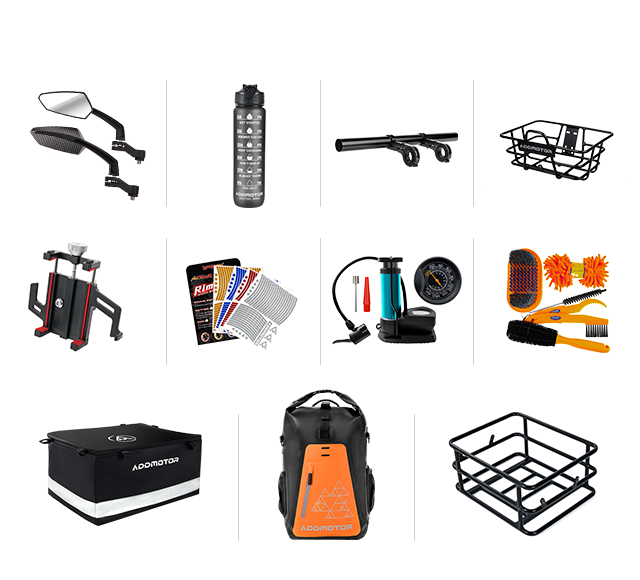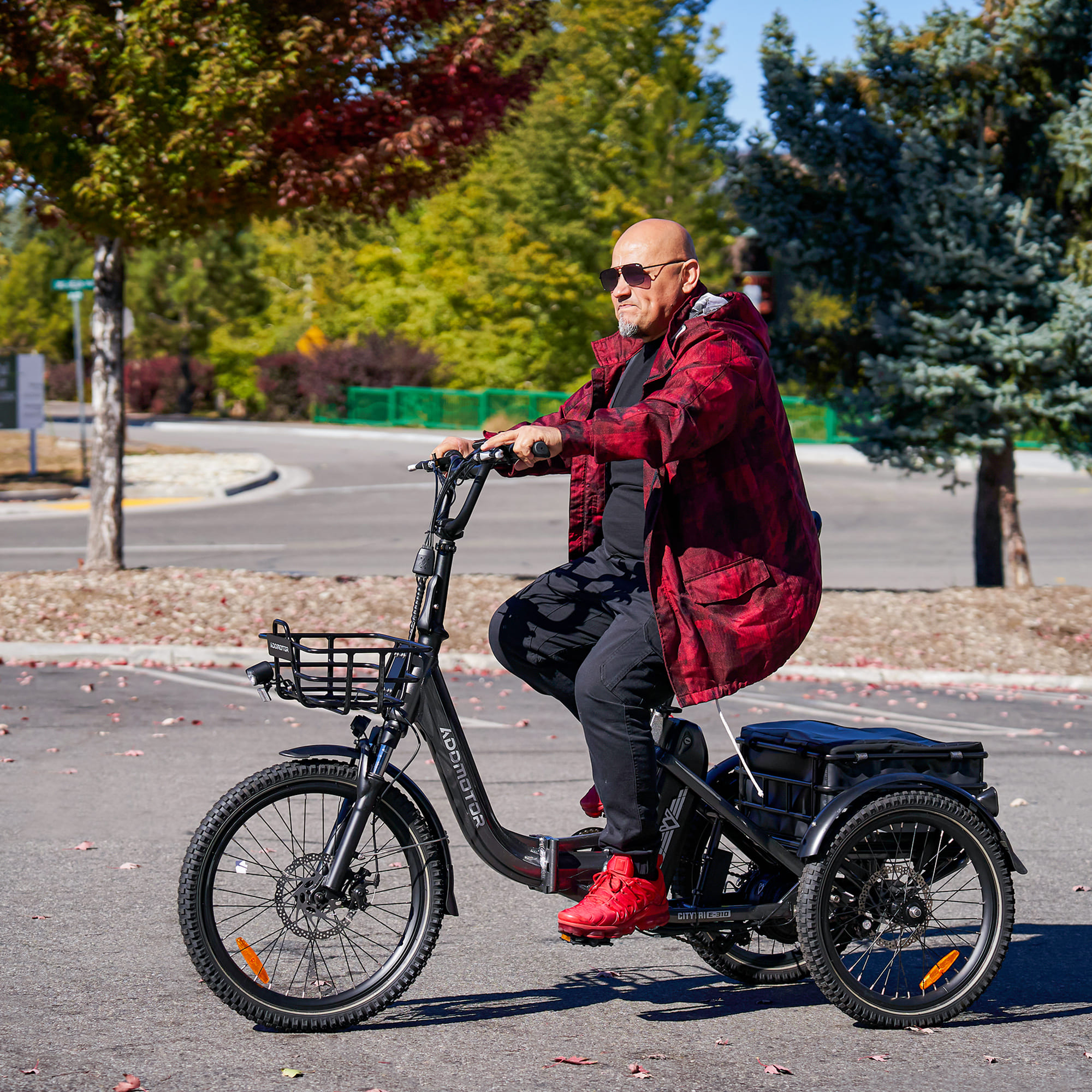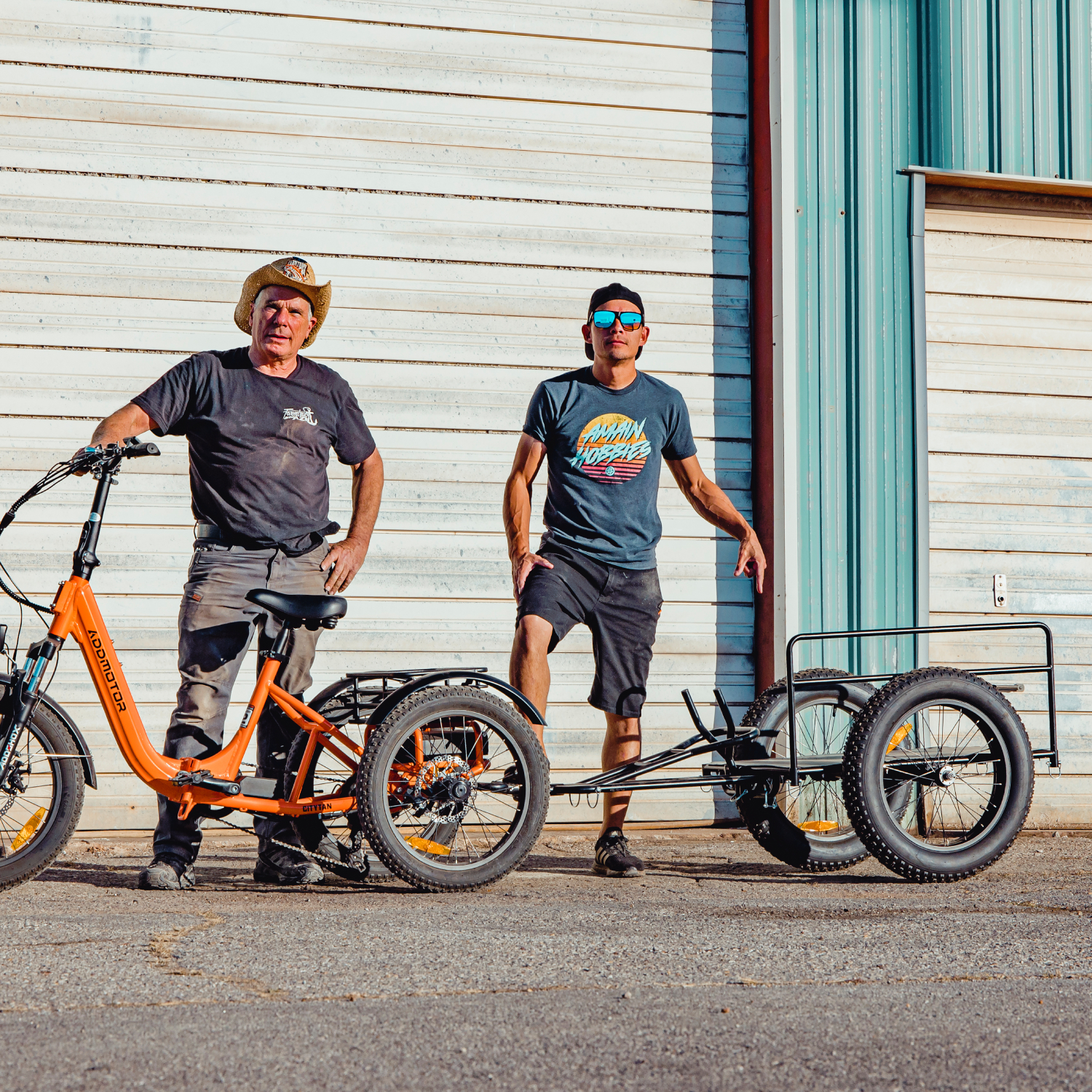Understanding Electric Bike Component Durability
By ADDMOTOR | 11 June 2025 | 0 Comments
Electric bikes (ebikes) are transforming modern transportation, offering eco-friendly mobility and an efficient way to navigate urban landscapes or explore off-road terrains. Whether used for commuting, recreation, or adventure , maintaining an ebike's durability ensures long-term performance, cost-effectiveness, and a seamless riding experience. Understanding the lifespan of key components and proper maintenance practices can significantly extend an its usability and reliability.
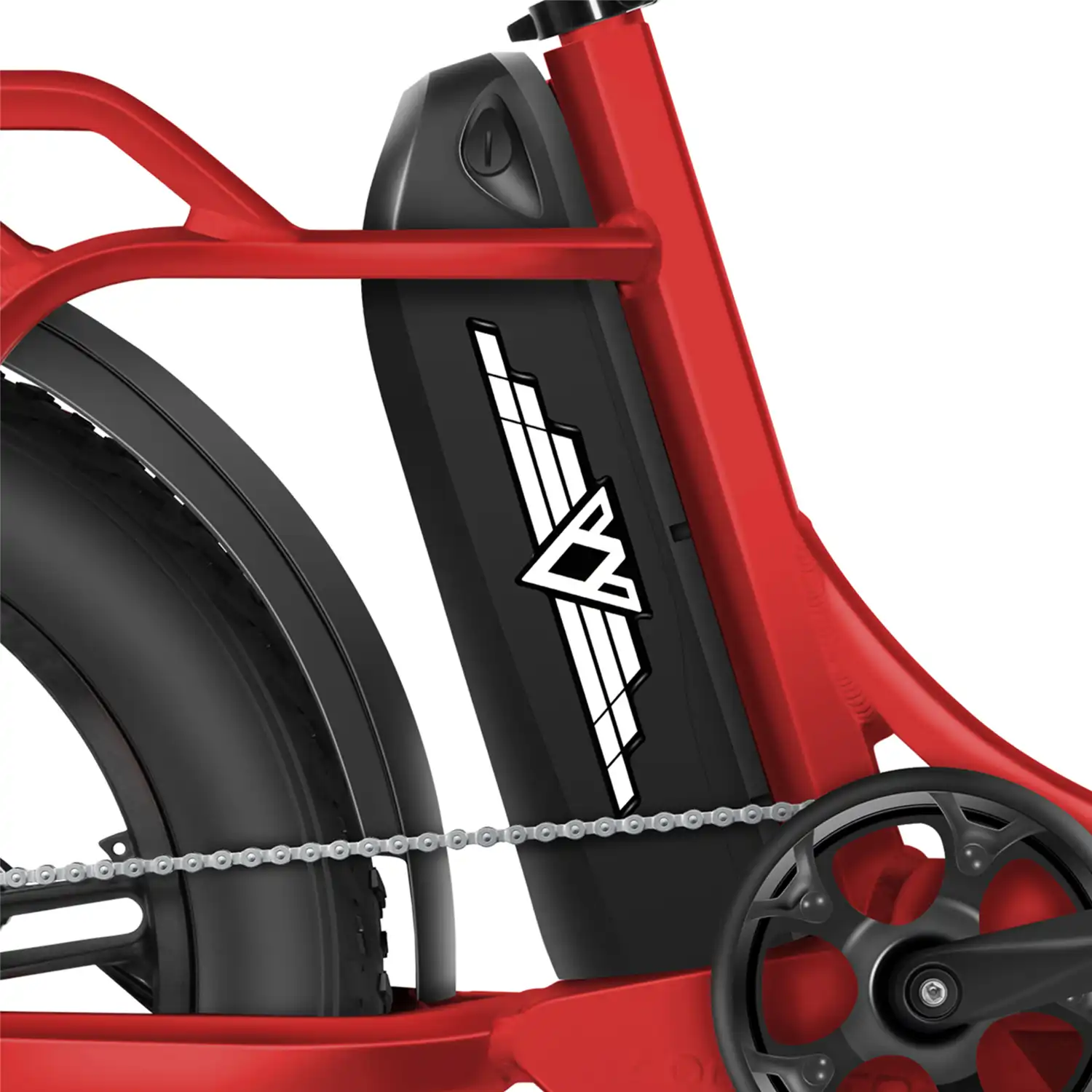
Serving as the core power source of an ebike, the battery plays a crucial role in determining range, efficiency, and overall performance. Most lithium-ion batteries used in electric bike have an expected lifespan of three to five years, influenced by charging habits and environmental exposure. To maximize battery durability, adopting smart maintenance practices is essential.
One of the most effective strategies is charging management—avoiding excessive full discharges or prolonged overcharging. Maintaining battery levels between 20% and 80% can significantly slow down degradation and prolong its usability. Temperature control is another critical factor, as extreme heat or freezing conditions can rapidly deteriorate battery cells. Ideally, storing and charging the battery in a stable, room-temperature environment prevents premature wear.
Additionally, consistent usage helps sustain battery efficiency. When left unused for extended periods, the battery’s internal chemistry can deteriorate, leading to capacity loss. Periodic charging, even when the bike is not in regular use, ensures that the battery remains in optimal condition and extends its lifespan. By following these maintenance techniques, riders can significantly enhance battery performance, ensuring reliable power output for years to come.
The motor is the powerhouse of an ebike, responsible for delivering speed, handling different terrains, and ensuring a smooth ride. Depending on motor type and how frequently the bike is used, its lifespan typically ranges from three to ten years. To maximize durability and efficiency, it’s essential to understand the two primary motor types and their maintenance requirements.
Hub motors, known for their simplicity, require minimal upkeep but can suffer from gradual wear due to internal friction. Because these motors are integrated into the wheel, the internal gears rotate rapidly during each ride, which can lead to faster deterioration over time. However, high-quality hub motors tend to last longer, particularly if the bike is ridden on smooth roads and maintained properly.
Mid-drive motors provide superior torque and efficiency, making them ideal for riders who tackle hills or rugged terrain. Their centralized placement enhances power distribution, but this complexity comes with added maintenance needs. Exposure to moisture can lead to rust and overheating, reducing motor efficiency. To mitigate these risks, it’s crucial to store the bike in a dry environment and regularly check for signs of corrosion or excess heat buildup.
Consistent care plays a significant role in extending motor life. Routine inspections help detect issues before they escalate, while avoiding excessive strain—such as overloading the electric bicycle or using maximum power settings unnecessarily—prevents premature wear. Keeping electrical connections clean and secure further ensures stable operation, reducing the likelihood of sudden malfunctions. With proper maintenance, an ebike motor can maintain good conditions for years, allowing riders to enjoy reliable and powerful rides.

E-bike tires play a crucial role in ensuring stability, traction, and overall riding comfort. Due to constant contact with the ground, they experience significant wear and tear, making them one of the most frequently replaced components. Depending on riding conditions, speed, and maintenance practices, tire lifespan typically ranges from 1,000 to 3,000 miles, lasting between one to three years.
To maximize tire longevity, maintaining optimal air pressure is essential. Underinflated tires increase rolling resistance and accelerate tread wear, while overinflation can make rides less comfortable and reduce grip. Checking and adjusting tire pressure regularly helps optimize performance. Additionally, the terrain plays a key role—smooth pavement prolongs tire lifespan, whereas frequent riding on rough, uneven surfaces can lead to faster degradation.
Regular inspections for wear patterns, cracks, or embedded debris can prevent unexpected tire failures. If the tread is visibly worn down or the tire structure weakens, timely replacement is recommended to maintain safety and efficiency. Fortunately, unlike costly components such as motors or batteries, e-bike tires are relatively affordable and straightforward to replace, making maintenance manageable for most riders.
With proper care, e-bike tires can provide a reliable and comfortable riding experience while minimizing the need for frequent replacements. Keeping an eye on their condition ensures a smoother journey and helps riders get the most mileage out of their investment.
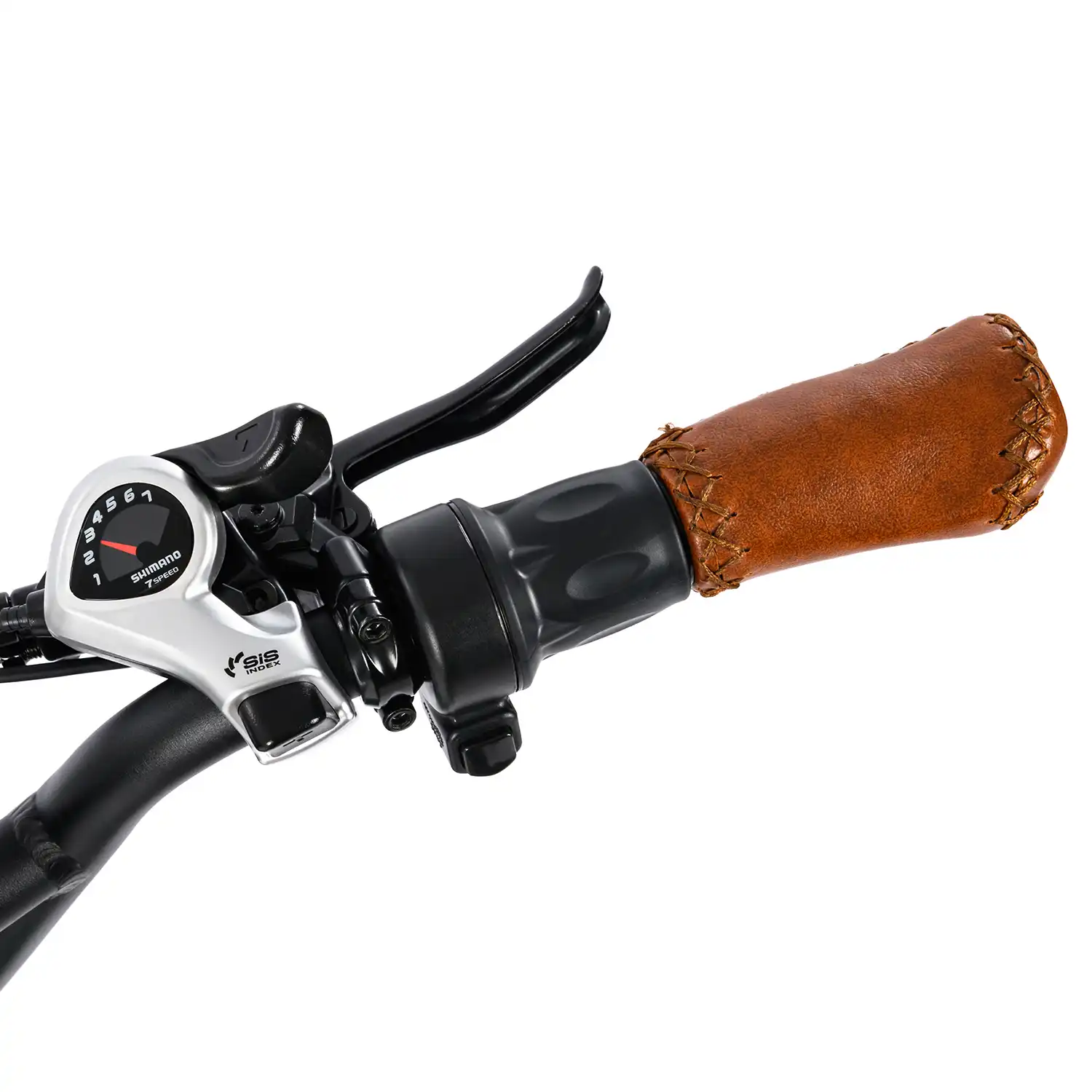
A well-functioning braking system is essential for both safety and riding confidence. The longevity of e-bike brakes depends on their material and how frequently they are used. Typically, brakes last between two to five years, with premium disc brakes offering durability up to 6,000 miles.
Regular maintenance ensures that braking efficiency remains optimal. Riders should routinely inspect brake pads for signs of thinning, as worn-out pads reduce stopping power and compromise safety. Proper alignment and tension adjustments prevent uneven wear and improve responsiveness.
Many modern electric bicycle come equipped with integrated braking systems, which automatically cut power to the motor when the brakes are engaged. This feature not only enhances stability but also minimizes unnecessary strain on the braking components, extending their lifespan.
By prioritizing routine brake checks and timely replacements, riders can maintain strong stopping power and ensure their electric bicycle remains a reliable mode of transportation.
To prolong chain longevity, regular lubrication and cleaning are crucial. A clean and well-lubricated chain reduces friction, prevents rust, and enhances overall efficiency. Additionally, maintaining proper tension prevents premature stretching and reduces excessive wear on drivetrain components. Riders should periodically inspect chains for signs of deterioration, such as stiff links or excessive grime buildup.
For those seeking low-maintenance alternatives, belt drives present a viable solution. Unlike traditional chains, belt drives require no lubrication, offer quieter operation, and typically last longer—some exceeding 5,000 miles before needing replacement. They are particularly beneficial for commuters or long-distance riders looking for reduced upkeep.
By implementing routine maintenance and choosing the right drivetrain system, riders can maximize performance while minimizing the frequency of replacements, ensuring a reliable and efficient riding experience.
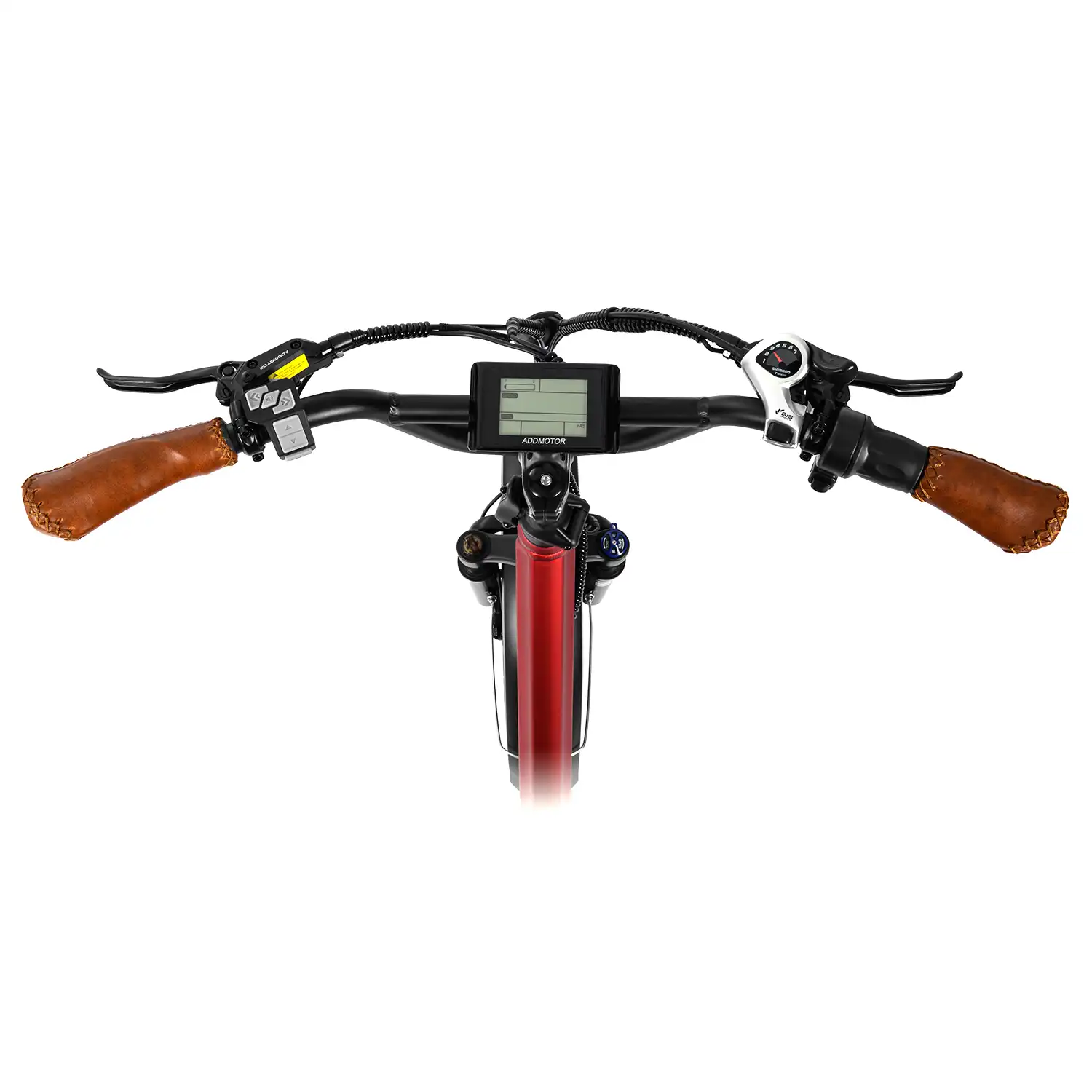
The e-bike display console serves as the rider’s command center, providing real-time data on speed, battery life, and distance traveled. While designed to withstand regular usage, its longevity depends on proper care and protection.
One of the biggest threats to display functionality is moisture exposure. Water damage can cause screen distortions, reduced responsiveness, or even internal circuit failures. To prevent this, riders should store their electric bicycle in a dry environment and consider using protective covers during wet conditions.
Physical impact is another common concern. Accidental drops or collisions may result in cracks or screen malfunctions. Installing a shock-absorbing mount or carefully positioning the display away from direct impact zones can help mitigate potential damage.
Routine cleaning also plays a vital role in maintenance. Dust and debris can accumulate over time, reducing screen clarity. Using a soft microfiber cloth to gently wipe the display ensures clear visibility without scratching the surface.
By taking these preventive measures, riders can maintain a fully functional display console, ensuring accurate and uninterrupted tracking of their electric bicycle performance.
* Store the bike in a dry, climate-controlled area to minimize component wear.
* Follow manufacturer guidelines for battery and motor care.
* Conduct routine inspections to identify early signs of component degradation.
* Replace worn-out parts before they compromise overall ebike performance.
Whether used for daily commuting, fitness, or off-road adventures, a well-maintained electric bicycle provides unmatched convenience and sustainability, making it a valuable long-term investment. Prioritizing regular inspections and proactive upkeep will not only enhance performance but also help riders embrace a more eco-friendly and cost-effective mobility solution.
The Advantages of Owning an EBike
Owning an electric bike goes beyond acquiring a mode of transportation—it’s a step toward a greener and more cost-effective way of life. By significantly cutting reliance on fossil fuels, ebikes contribute to reducing carbon emissions, making them an environmentally friendly solution for daily travel. They also help minimize commuting expenses, eliminating the need for fuel and lowering maintenance costs. Additionally, ebikes encourage physical activity without excessive exertion, allowing riders to enjoy longer trips with ease. Whether navigating city streets or exploring scenic landscapes, electric bike offer an efficient, sustainable, and health-conscious alternative to conventional vehicles.Key Components and Their Lifespan
Battery Performance and Maintenance

Serving as the core power source of an ebike, the battery plays a crucial role in determining range, efficiency, and overall performance. Most lithium-ion batteries used in electric bike have an expected lifespan of three to five years, influenced by charging habits and environmental exposure. To maximize battery durability, adopting smart maintenance practices is essential.
One of the most effective strategies is charging management—avoiding excessive full discharges or prolonged overcharging. Maintaining battery levels between 20% and 80% can significantly slow down degradation and prolong its usability. Temperature control is another critical factor, as extreme heat or freezing conditions can rapidly deteriorate battery cells. Ideally, storing and charging the battery in a stable, room-temperature environment prevents premature wear.
Additionally, consistent usage helps sustain battery efficiency. When left unused for extended periods, the battery’s internal chemistry can deteriorate, leading to capacity loss. Periodic charging, even when the bike is not in regular use, ensures that the battery remains in optimal condition and extends its lifespan. By following these maintenance techniques, riders can significantly enhance battery performance, ensuring reliable power output for years to come.
Motor Longevity and Care
The motor is the powerhouse of an ebike, responsible for delivering speed, handling different terrains, and ensuring a smooth ride. Depending on motor type and how frequently the bike is used, its lifespan typically ranges from three to ten years. To maximize durability and efficiency, it’s essential to understand the two primary motor types and their maintenance requirements.
Hub motors, known for their simplicity, require minimal upkeep but can suffer from gradual wear due to internal friction. Because these motors are integrated into the wheel, the internal gears rotate rapidly during each ride, which can lead to faster deterioration over time. However, high-quality hub motors tend to last longer, particularly if the bike is ridden on smooth roads and maintained properly.
Mid-drive motors provide superior torque and efficiency, making them ideal for riders who tackle hills or rugged terrain. Their centralized placement enhances power distribution, but this complexity comes with added maintenance needs. Exposure to moisture can lead to rust and overheating, reducing motor efficiency. To mitigate these risks, it’s crucial to store the bike in a dry environment and regularly check for signs of corrosion or excess heat buildup.
Consistent care plays a significant role in extending motor life. Routine inspections help detect issues before they escalate, while avoiding excessive strain—such as overloading the electric bicycle or using maximum power settings unnecessarily—prevents premature wear. Keeping electrical connections clean and secure further ensures stable operation, reducing the likelihood of sudden malfunctions. With proper maintenance, an ebike motor can maintain good conditions for years, allowing riders to enjoy reliable and powerful rides.
Tire Durability and Replacement Considerations

E-bike tires play a crucial role in ensuring stability, traction, and overall riding comfort. Due to constant contact with the ground, they experience significant wear and tear, making them one of the most frequently replaced components. Depending on riding conditions, speed, and maintenance practices, tire lifespan typically ranges from 1,000 to 3,000 miles, lasting between one to three years.
To maximize tire longevity, maintaining optimal air pressure is essential. Underinflated tires increase rolling resistance and accelerate tread wear, while overinflation can make rides less comfortable and reduce grip. Checking and adjusting tire pressure regularly helps optimize performance. Additionally, the terrain plays a key role—smooth pavement prolongs tire lifespan, whereas frequent riding on rough, uneven surfaces can lead to faster degradation.
Regular inspections for wear patterns, cracks, or embedded debris can prevent unexpected tire failures. If the tread is visibly worn down or the tire structure weakens, timely replacement is recommended to maintain safety and efficiency. Fortunately, unlike costly components such as motors or batteries, e-bike tires are relatively affordable and straightforward to replace, making maintenance manageable for most riders.
With proper care, e-bike tires can provide a reliable and comfortable riding experience while minimizing the need for frequent replacements. Keeping an eye on their condition ensures a smoother journey and helps riders get the most mileage out of their investment.
Brake System Efficiency and Wear

A well-functioning braking system is essential for both safety and riding confidence. The longevity of e-bike brakes depends on their material and how frequently they are used. Typically, brakes last between two to five years, with premium disc brakes offering durability up to 6,000 miles.
Regular maintenance ensures that braking efficiency remains optimal. Riders should routinely inspect brake pads for signs of thinning, as worn-out pads reduce stopping power and compromise safety. Proper alignment and tension adjustments prevent uneven wear and improve responsiveness.
Many modern electric bicycle come equipped with integrated braking systems, which automatically cut power to the motor when the brakes are engaged. This feature not only enhances stability but also minimizes unnecessary strain on the braking components, extending their lifespan.
By prioritizing routine brake checks and timely replacements, riders can maintain strong stopping power and ensure their electric bicycle remains a reliable mode of transportation.
Chain and Drivetrain Sustainability
A well-maintained drivetrain ensures smooth power transmission and optimal riding performance. The chain and gears work together to convert motor energy into motion, making them essential components of an e-bike's efficiency. Depending on usage and maintenance, chains typically last between 1,000 and 5,000 miles, though mid-drive motors often accelerate wear due to higher torque output.To prolong chain longevity, regular lubrication and cleaning are crucial. A clean and well-lubricated chain reduces friction, prevents rust, and enhances overall efficiency. Additionally, maintaining proper tension prevents premature stretching and reduces excessive wear on drivetrain components. Riders should periodically inspect chains for signs of deterioration, such as stiff links or excessive grime buildup.
For those seeking low-maintenance alternatives, belt drives present a viable solution. Unlike traditional chains, belt drives require no lubrication, offer quieter operation, and typically last longer—some exceeding 5,000 miles before needing replacement. They are particularly beneficial for commuters or long-distance riders looking for reduced upkeep.
By implementing routine maintenance and choosing the right drivetrain system, riders can maximize performance while minimizing the frequency of replacements, ensuring a reliable and efficient riding experience.
Display Console Protection and Functionality

The e-bike display console serves as the rider’s command center, providing real-time data on speed, battery life, and distance traveled. While designed to withstand regular usage, its longevity depends on proper care and protection.
One of the biggest threats to display functionality is moisture exposure. Water damage can cause screen distortions, reduced responsiveness, or even internal circuit failures. To prevent this, riders should store their electric bicycle in a dry environment and consider using protective covers during wet conditions.
Physical impact is another common concern. Accidental drops or collisions may result in cracks or screen malfunctions. Installing a shock-absorbing mount or carefully positioning the display away from direct impact zones can help mitigate potential damage.
Routine cleaning also plays a vital role in maintenance. Dust and debris can accumulate over time, reducing screen clarity. Using a soft microfiber cloth to gently wipe the display ensures clear visibility without scratching the surface.
By taking these preventive measures, riders can maintain a fully functional display console, ensuring accurate and uninterrupted tracking of their electric bicycle performance.
Maximizing Your E-Bike’s Longevity
To extend your e-bike’s lifespan, adopt proactive maintenance habits:* Store the bike in a dry, climate-controlled area to minimize component wear.
* Follow manufacturer guidelines for battery and motor care.
* Conduct routine inspections to identify early signs of component degradation.
* Replace worn-out parts before they compromise overall ebike performance.
Conclusion
Maximizing the lifespan of an e-bike requires a combination of quality components and consistent maintenance. While premium e-bikes may come with a higher upfront cost, they often feature durable materials and advanced engineering, reducing the need for frequent replacements or repairs. By understanding how each component functions and implementing proper care routines, riders can extend the usability of their ebike, ensuring years of efficient and enjoyable transportation.Whether used for daily commuting, fitness, or off-road adventures, a well-maintained electric bicycle provides unmatched convenience and sustainability, making it a valuable long-term investment. Prioritizing regular inspections and proactive upkeep will not only enhance performance but also help riders embrace a more eco-friendly and cost-effective mobility solution.
Leave a Reply
Your email address will not be published.Required fields are marked. *
Latest Stories

